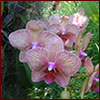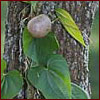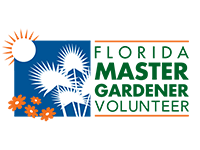The Neighborhood Gardener – January
Happy New Year!
Caring for Your New Orchid
 By Wendy Wilber, Alachua County Extension Office
By Wendy Wilber, Alachua County Extension Office
Q: I have a beautiful orchid that was a gift. The label says it is a Phalaenopsis orchid. The flowers are gone now, but the plant is really healthy. Is it OK to leave it inside, and how do I get it to bloom again?
A:
Phalaenopsis, or the moth orchid, is a favorite orchid to grow as a houseplant. Read Wendy's advice.
Junior Master Gardener Book Award Winners
 Each year, the "Growing Good Kids: Excellence in Children's Literature Awards" program recognizes children's books that promote an understanding of and appreciation for gardening and the environment. This year’s books are:
"The Mangrove Tree," by Susan L. Roth and Cindy Trumbore; "Meadowlands: A Wetland Survival Story," by Thomas F. Yezerski; and "Planting the Wild Garden," by Kathryn O. Galbraith. More
Each year, the "Growing Good Kids: Excellence in Children's Literature Awards" program recognizes children's books that promote an understanding of and appreciation for gardening and the environment. This year’s books are:
"The Mangrove Tree," by Susan L. Roth and Cindy Trumbore; "Meadowlands: A Wetland Survival Story," by Thomas F. Yezerski; and "Planting the Wild Garden," by Kathryn O. Galbraith. More
Plant of the Month: Lettuce
 Winter is the best time to grow lettuce. Good leaf lettuce selections for Florida include 'Black-seeded Simpson' and 'Red Sails'; many others are listed in the Florida Vegetable Gardening Guide. Lettuce seeds are unusual in that they need light to germinate, so simply press or lightly rake them into the soil surface. More
Winter is the best time to grow lettuce. Good leaf lettuce selections for Florida include 'Black-seeded Simpson' and 'Red Sails'; many others are listed in the Florida Vegetable Gardening Guide. Lettuce seeds are unusual in that they need light to germinate, so simply press or lightly rake them into the soil surface. More
January in Your Garden
Planting deciduous fruit trees now gives their roots time to develop before the warm, dry spring months. This is also a good time to prune and fertilize existing trees. While crapemyrtles do not require pruning, removing seed pods, crossing branches, and small twiggy growth improves the appearance and form of the plant.
For more month-by-month gardening tips, check out the Florida Gardening Calendar. Three different editions of the calendar provide specific tips for each of Florida's gardening regions—North, Central, and South. More
Friend or Foe? Foe: Air Potato
 This non-native, invasive plant spreads faster than kudzu! Air potato is a vigorously twining vine, which grows from an underground tuber. It produces large numbers of potato-like growths which drop off to form new plants. The stems can rapidly grow to 60 feet in length. To prevent the plant from spreading, in January or February, pick up all of the "potatoes" that have fallen to the ground. More
This non-native, invasive plant spreads faster than kudzu! Air potato is a vigorously twining vine, which grows from an underground tuber. It produces large numbers of potato-like growths which drop off to form new plants. The stems can rapidly grow to 60 feet in length. To prevent the plant from spreading, in January or February, pick up all of the "potatoes" that have fallen to the ground. More
Featured Shows on Gardening in a Minute
Success Stories
- We're looking for inspiring, Florida-Friendly success stories from your county. Submit yours today to Wendy Wilber.





